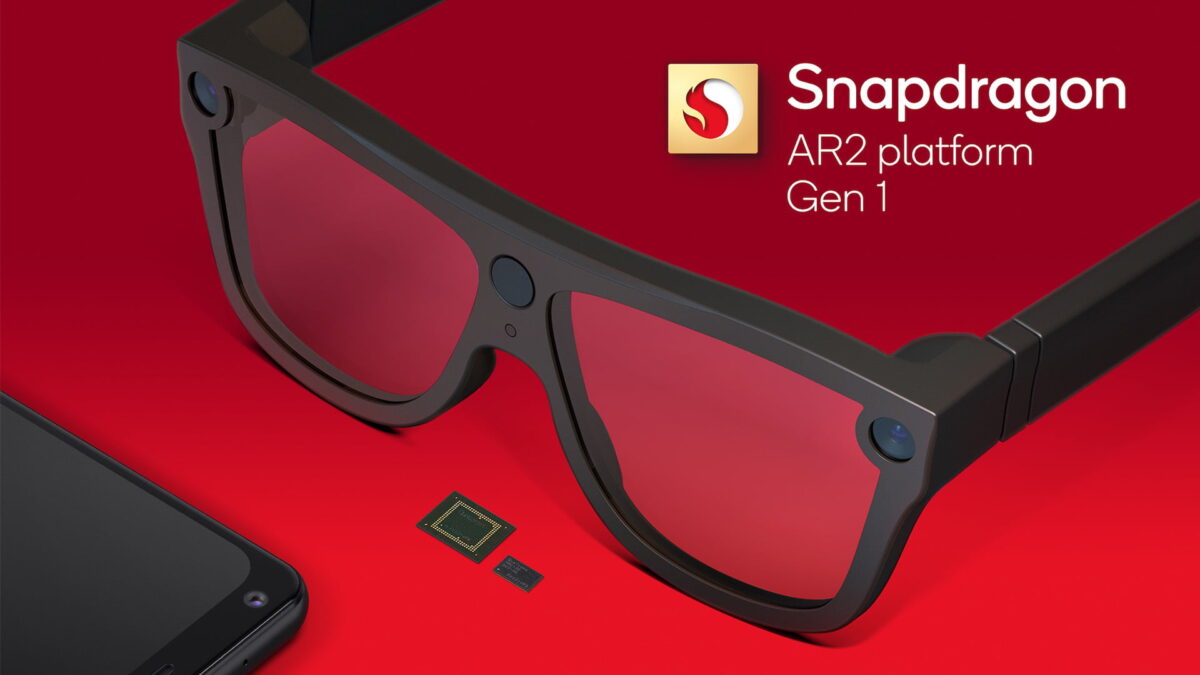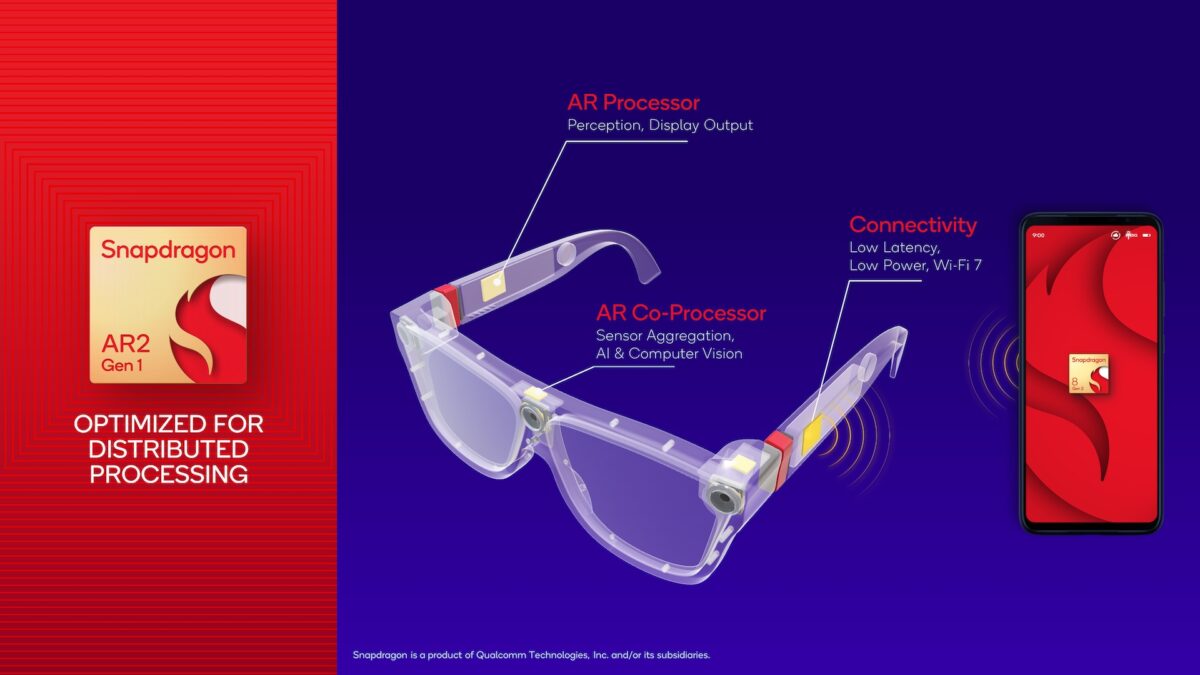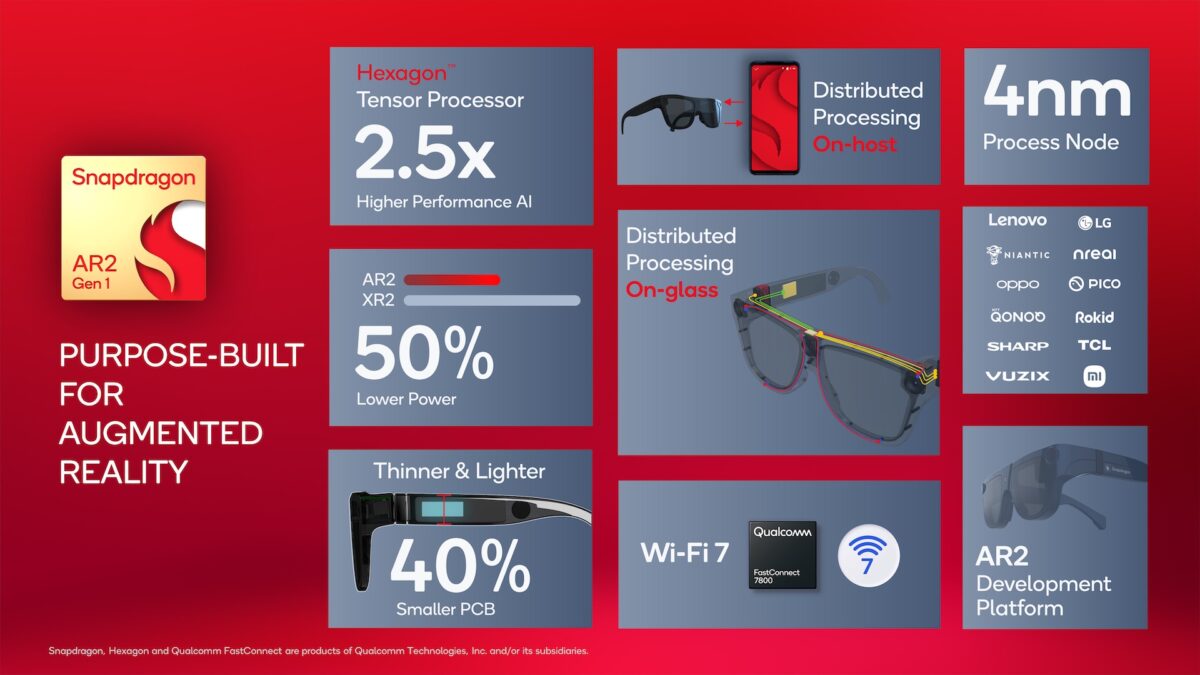Qualcomm introduces Snapdragon AR2 chip for next-gen AR glasses

AR glasses need chips that are small, cool, and low-power. Qualcomm developed the Snapdragon AR2 specifically for these needs.
Qualcomm's XR product family welcomes a new member. The Snapdragon XR1 Gen 1 (2018), Snapdragon XR2 Gen 1 (2019), and Snapdragon XR2+ Gen 1 (2022) are followed by the Snapdragon AR2 Gen 1, which is manufactured in a 4nm process.
The product name is unfortunate. XR does include AR and the older chips are also used in AR glasses like Lenovo's Think Reality A3 and Qualcomm's own AR reference design.
According to Qualcomm's XR boss Hugo Swart, Qualcomm called the new chip product "AR2" because it is specifically designed for slim and lightweight AR glasses, while the XR1 and XR2 series chips are suitable for headsets of any kind (VR, MR, AR) where the form factor does not play such an important role.
"With the technical and physical requirements for VR/MR and AR diverging, Snapdragon AR2 represents another metaverse-defining platform in our XR portfolio to help our OEM partners revolutionize AR glasses," Swart says.
Snapdragon AR2 relies on distributed computing
Strictly speaking, the Snapdragon AR2 consists of three spatially separated chips. These are an AR processor, and co-processor, and a Wi-Fi 7 chip.

The three chips are separate and perform different tasks. | Image: Qualcomm
One of the temples houses the AR processor and supports up to 9 cameras and sensors. The AR co-processor is installed in the frame of the glasses and is responsible for the local collection of sensor data and various AI tasks. The Wi-Fi 7 chip is integrated into the other temple and ensures fast data exchange between the AR glasses and its computer.
The spatially distributed data processing has several advantages at once. On the one hand, the weight is better distributed and the temples are thinner. On the other hand, the chips generate less waste heat than when they come together at one point.
Smaller and more power-efficient than XR2
According to Qualcomm, the multi-chip architecture enables 50 percent lower power consumption and 2.5 times the AI performance of the Snapdragon XR2 Gen 1. The XR2 Gen 1 runs in Qualcomm's latest AR reference design and many VR headsets such as Meta Quest 2. The AR processor's PCB is also 40 percent smaller, making it a better fit in a glasses' temple.

The chip's key features at a glance. | Image: Qualcomm
On the software side, the Snapdragon AR2 optimizes for Qualcomm's AR development platform Snapdragon Spaces. It supports spatial tracking, object, image, and surface recognition, spatial anchoring, hand tracking, 3D mapping, and scene understanding.
OEM partners working on devices with Snapdragon AR2 include Lenovo, LG, Nreal, OPPO, Pico, Sharp, Tencent, Vuzix, and Xiaomi. Meta and Apple are expected to develop their own chips for their upcoming AR glasses. The multi-year partnership between Meta and Qualcomm announced in September is limited to chips for mixed reality headsets.
Note: Links to online stores in articles can be so-called affiliate links. If you buy through this link, MIXED receives a commission from the provider. For you the price does not change.